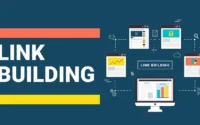Link Building – How Long does it takes to see results?

Link Building; Everyone creates an SEO strategy to see the ranking of their website. For this to happen, link building is the best possible way. You and I are aware of this. But the most basic question that anyone who knows SEO or not asks is: how long will it take to show results?
Most experts in the field of SEO would agree that it can take between 3-12 months to show realistic results from link building. Sometimes it can be frustrating to go through this period where there are hardly any results, but to avoid it we must see
- Why does it take so long to get results with link building?
- Why can’t we make this happen as quickly as possible?
- What factors affect link building?
- And for non-SEOs, a little reminder:
- what is link building?
What is link building?
In a nutshell, link building is how you create hyperlinks pointing to your website, also known as backlinks, to improve your search engine visibility.
The many ways to do this are
- Email Outreach – This increases your reach and also builds your list.
- Content Marketing: You can turn your content into an asset.
- Useful tools.
Why is it so long?
It is not magic that it becomes in a few days or in a few weeks. It takes time for Google to crawl your new backlinks and then provide authority to your page, and it takes over a year to reach peak traffic. There is a big difference between search engine ranking and Google indexing. But you can see two things about your link-building campaign in no time. First of all, your local SEO conditions would improve quickly. Second, the rate at which all the changes occur will tell you about the quality of your links.
The best way to build your authority through link building is to get backlinks from high-quality, credible websites. If you have tons of backlinks but they come from spammy and irrelevant sites, they probably won’t help you rank higher.
There are many ways to acquire backlinks, including:
- guest blogging
- animation in social networks
- hand range
- Chase the backlinks of the competition
- How to build links successfully
1. Ask for links
Raising awareness can take a lot of time and effort with little reward, but it can be more effective with the right tools. If you want to get a backlink from a particular website that you know could help build the authority of your website or page, you will likely need to contact the website owner directly to make this happen.
But before you start soliciting backlinks on the internet, keep a few things in mind: The links you request must be from a website related to your niche Consider the performance and credibility of the other website It’s helpful to write a well-written email before you start contacting site owners. To find leads and manage your campaign, you can use our Link Building Tool.
2. Add links manually
Manual link building involves placing links yourself, whether in a blog comment, a guest post on another site, or in a press release. When you add links yourself, you generally have full control over the outcome of the tactic, rather than relying on a journalist or other third party to link to your site. This is precisely why these tactics are often referred to as “manual link building. But keep in mind that the links you control are usually not of the best quality. In the eyes of Google, any link that is not placed editorially is manipulative. You can manually add links editorially with intent, but it’s important not to spam links or add them randomly.
Therefore, there is no need to be afraid of adding links manually, as long as it is done carefully. This link-building method can generate benefits like referral traffic or help you position yourself as a thought leader. It can also help you build your brand by engaging with users in your niche.
3. Earn links
To gain a true competitive advantage through links, you need to adopt a strategy that provides you with editorially placed links. Earning links takes a lot of effort, but it offers the biggest reward. Therefore, be prepared to invest time and resources to earn links. By doing so, you’ll get links that competitors will have a hard time replicating. When you get a link, a third party is actively choosing to link to your website, which means they are linking because they have a reason to. This adds value to your content and your site accordingly.
Go to the Competitors tab to start your search and use this information to find opportunities for your own site.
Next, connect a competitor to the tool to see the following:
- Use the anchor report to find the most used anchor text in your backlinks
- Use the Referring Domains Report to see which domains are linking to your site and whether they’ve recently gained or lost backlinks.
- Use the indexed pages report to check which pages on your competitor’s website have generated the most backlinks
Strategies for Successful Link Building
Now comes the fun part. There are many methods of building proper links, but some will be more effective than most.
Below are a variety of methods to create healthy backlinks from quality websites. Create linkable resources Linkable resources are pieces of content intended to attract links.
A common type of linkable asset is an infographic – this is a good strategy for presenting original research in graphic form to those in your niche. Also, creating linkable assets is a great way to build brand awareness and grab social media attention.
Infographics are about 30 times more likely to be read than a full article, so creating linkable resources can fill the void for those who don’t want to read all of your content. And you don’t have to be an expert graphic designer to create linkable resources. Even if you’re just starting out or don’t have the budget to create, you can use customizable templates from sites like PicMonkey or Canva.
Being active on social media
An easy way to start building backlinks is by posting your content on social media. And once you’re armed with linkable charts and assets, your chances of getting backlinks are likely to increase. But don’t forget to be active on social media as well as share new posts, otherwise, you’ll miss out on countless opportunities to get your brand noticed.
Even if you’re new to social media, you can easily get started:
Post news and updates about your brand Engage with your audience in your comments.
Respond to brand mentions Engage in conversations on social media within your niche.
Aspects that influence the effectiveness of link building
1. The authority of a site
Domain Rank (DR) is a metric that indicates the number of backlinks a website has received from trusted sources. Generally, the higher the DR, the higher the website’s trust score.
2. Positive and negative traffic trends
In a nutshell, the positive trend accelerates the effects of a link-building campaign, while the negative trend can hamper short-term results. Google follows the momentum and prefers resources that show a stable growth trend. If a website has a negative traffic trend, it may be challenging to return to its original growth point for reasons that affect the relevancy and trust score of the website.
3. Brand Popularity
One of the crucial factors in link building is whether a website you are linking from is an authorized brand or not.
4. Types of pages
As a general rule, links to content pages yield positive results faster than business pages.
different niches
Alright, so we’ve discussed the factors that can speed up or slow down the results of link building campaigns. But to avoid misrepresentation, let’s take a look at some link-building campaigns and how quickly they managed to show positive change. The first example is a real challenge that many consider a lost cause. This site had zero organic traffic, zero authority, and zero brand traffic, and came from a very competitive niche: digital marketing. So it’s no surprise that the website showed no change in organic traffic in the first eight months, even though the number of keywords the website ranked in the SERPs increased slightly.
Q&A
Time period?
Although link building effectively promotes a young site, you must understand what influences effectiveness when working with site links. However, don’t expect quick results: it can take three months to a year to see changes in site visibility.
Why are my backlinks not showing?
If the web pages ranked above yours have a lot more backlinks, that could be part of the reason it’s not showing up in Google. Paste your URL into Site Explorer or our free backlink checker to see the number of unique websites (referring domains) linking to your page.
How is link-building success measured?
Successful link building is not measured by the number of links created. … These are the top three metrics you can use to measure the effectiveness of your link-building efforts.
Positive changes in landing page positions in Google search. .
Organic traffic growth.


